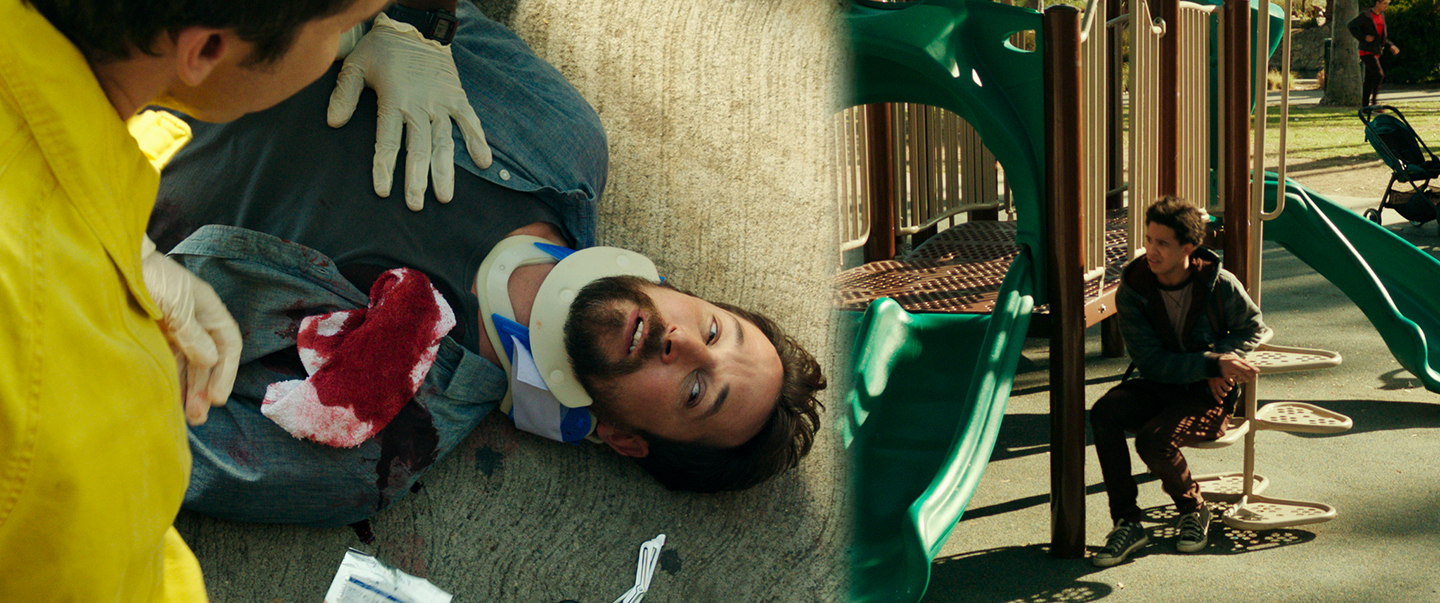
Creative Perspectives For Shot
Jacek Laskus, ASC, PSC details his visual approach to this indie drama depicting how gun violence impacts lives.
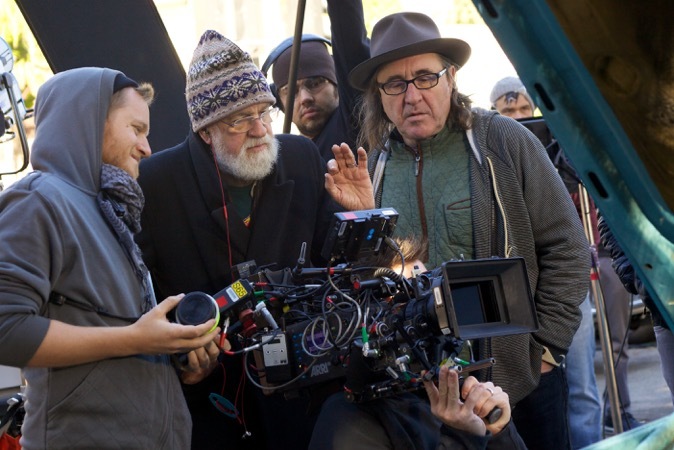
Jacek Laskus, ASC, PSC details his visual approach to this indie drama depicting how gun violence impacts lives.
In veteran director Jeremy Kagan’s new feature Shot, the life of an average man, Mark (Noah Wyle), is disrupted when the accidental discharge of an illegal firearm results in a life-threatening injury — also forever altering the lives of his estranged wife, Phoebe (Sharon Leal), and Miguel (Jorge Lendeborg Jr.), the young teen responsible for his plight.
Largely taking place in real time, the story depicts the physical trauma and emotional desperation of this tragedy as first responders, doctors and nurses struggle to save Mark’s life, and then jumps ahead to see how the three characters again converge to deal with a complex aftermath fuelled by guilt, anger and fear.
Working on location in Los Angeles, the picture was photographed by Jacek Laskus, ASC, PSC, whose other feature credits include The Devil’s Arithmetic, The Whole Shebang and Multiple Sarcasms while his television work includes The Caine Mutiny Court Marshal, The Guardian, and Masters of Science Fiction. He is also an accomplished documentary cameraman, with credits including Choke, Stand, The Human Face of Big Data and the upcoming Viva Verdi.
Here, Laskus discusses the origin of the project with Kagan, its unique use of character and perspective and his production approach.
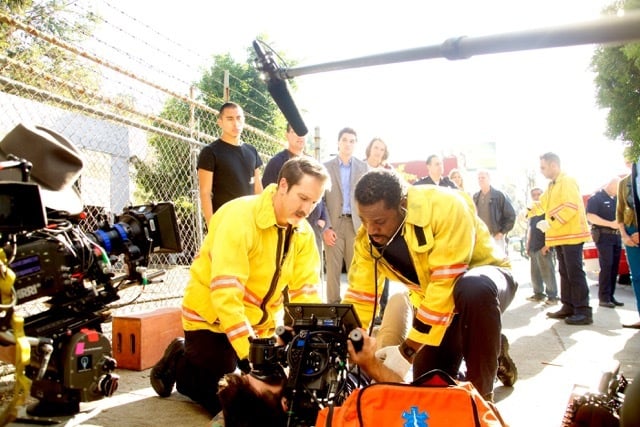
American Cinematographer: How did this project originally come to your attention?
Jacek Laskus: I’d met the director, Jeremy Kagan, on a series I did called The Guardian. He directed two episodes and I really enjoyed working with him. He brought this je ne sais quoi while directing both episodes. When you’re working on a series and have shot so many episodes, it becomes routine, but Jeremy came in and gave everything a little twist, and that caught my attention. We kept in touch (we used to live on the same street) and he hired me to do another project with him directing [Golda’s Balcony]. Then he mentioned this idea for this film — he wanted to do something on the subject of gun violence and, in 2015, Noah Wyle was attached to the project. As Jeremy put together the financing, we kept talking and the script went through several changes, as Noah asked for more complex film. I think the strategy became to do a film that addresses gun violence but not feel so much like a “theme” film — more of a drama rather than an issue film. That’s what I also felt, that if you care for the character you’re watching on screen who has just been shot, you’ll really feel for him. And the drama keeps you engaged, as opposed to just citing statistics on gun violence and all that stuff. Noah really helped bring a strong character to the film. Second act takes place in an ER room, so we couldn’t have a better actor [laughs]. For me, that portion of the project was a primary creative challenge, as he’s lying flat on his back on an operating table during that whole time. All 45 minutes of the movie, that’s where he is. That section is mostly in split screen with the character of Miguel, who fired the gun.
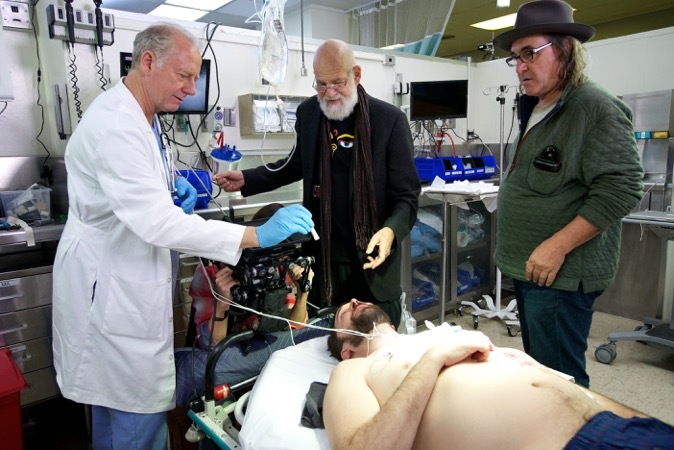
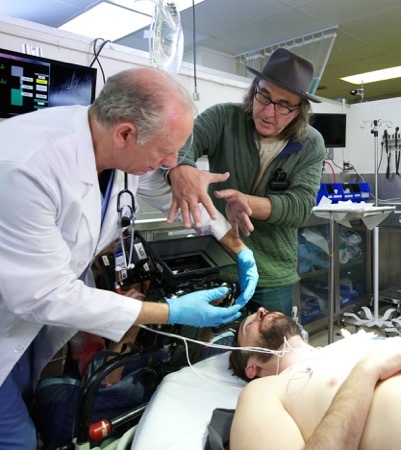
What were your discussions and how did you devise a visual solution for this?
First of all, Jeremy determined that this portion of the picture should have only four points of view. So we would never be with a camera from any other angle than those four points of view. First is looking at Mark — medium, medium close, very close — and second is what he sees from his point of view, which gives us ability to do wider shots and maybe a little tighter, but still only from his point of view. Then we have the perspective of his wife, Phoebe, and looking at her. So those are the four angles we would have — no God’s angle, and that brought a certain discipline to shooting. We shot with two cameras, both Alexas; one Mini and another one the regular, and the Mini was very good for point of view because we actually could put the camera handheld next to Noah’s head, right over his shoulder. At first, Jeremy wanted to experiment with using small, helmet-mounted cameras to achieve this, and we discussed the idea with Radiant Images. There were a lot of tests and we found several primary issues with it: First, the camera on the actor’s head becomes very heavy. Second, the actor cannot actually see what the camera sees, and, finally, you can’t pull focus, because those kinds of cameras are not designed to do that so you’re losing a certain visual language because you can’t control what is and is not in focus. That’s how you can depict the emotion of the characters. I wanted to help control that through my choice of lenses. We could have not control that with the helmet cameras.
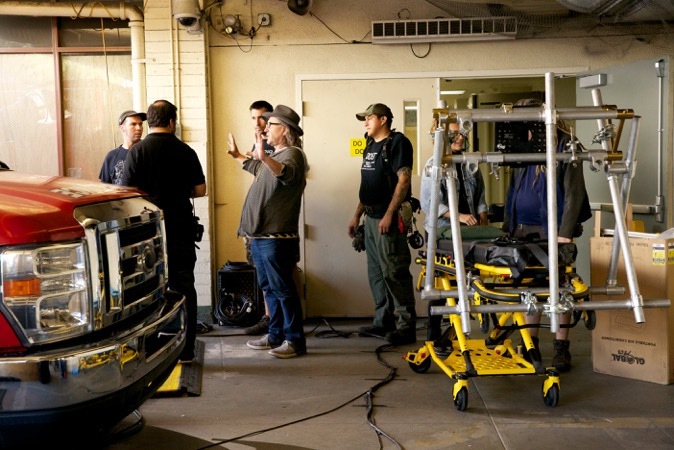
And this control of depth of field was especially important to create emphasis as you were so limited in angles due to your perspective approach.
Exactly. So the first act of the film — which is relatively traditional from a photographic perspective — is our introduction to all three characters, a backdrop story between Mark and Phoebe, an introduction to Miguel, and then the accidental shooting takes place, beginning the second act from their perspectives. The way the script was written, there were certain story elements designed specifically to happen at the same time, for example, as Mark is transported to the hospital in an ambulance. In our frame, we have him, but also Miguel, who shot him, as he’s hiding in the basement of a nearby house. Both characters are seen in these closed environments and the elements had to be composed in a way that would work together on screen. That meant we had to figure out very precisely what images would be going where and what the transitions between them would be.
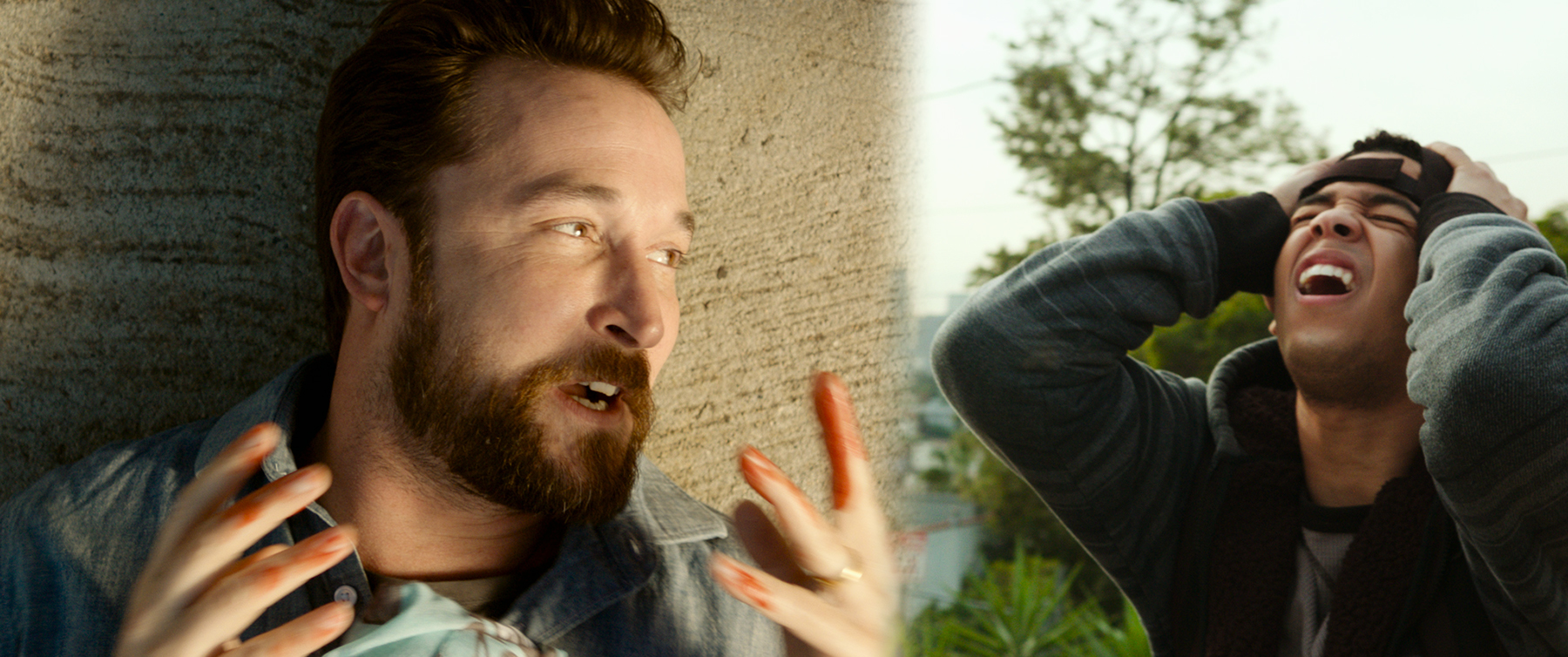

Were these split-screens compositions designed beforehand or storyboarded out?
Jeremy did work with a storyboard artist, but we made sure our coverage would allow the shots to connect in the edit, generally by framing far left or far right. Jeremy also used the soundtrack to guide the audience through these sequences, helping them understand which was the main image to focus on and which was the secondary. Our aspect ratio helped us in that regard. At first, I actually wanted to shoot the picture in black-and-white and 1.66:1, but that got voted down [laughs], so we shot 1.85:1 with a kind of desaturated look for much of the film. But then, as Mark is shot, the camera spins with him as he hits the sidewalk, and the frame opens up into a widescreen 2.40:1 image, which helped us with the split-screen work because we had a little more room.
While shooting his POVs from the gurney in the ER, you didn’t use any kind of mounts? You just did handheld with the camera next to him?
Yes, the Mini right next to him, or our operator just laying down in his place. Looking down on him, we did use a crane. We were shooting this ER segment for about two weeks at the USC Medical Center in Los Angeles — the entire show was L.A.-based — which has a fully-equipped section designated for training medical personnel but was also available for our production. [Kagan is a tenured professor at USC.] That was another challenge because initially I thought that we would build sets and I’d be able to control the color of the walls and all that stuff — that I would be able to bring more contrast that way. But when we decided to use this location, we no longer had that kind of production design and art direction control, so I had to instead rely on lighting to make the space more interesting and help the audience feel the different environments. Otherwise it would all seem like a single room and could feel claustrophobic. So I decided to divide our location into three different color zones, with the ER area being the brightest part. That was going to be basically white. Outside that space, we didn’t change out the fluorescents and added plus green gels, allowing for a separation of spaces. Then, as Mark travels through the hospital for an MRI, the light changes color from green to blue to a kind of orange. He’s only semi-conscious at this point and has no idea where he really is, so I wanted this to be kind of a journey through muted colors.
Did you have to do much testing with different lenses for Mark’s point of view from the gurney?
We did the whole day of shooting with different cameras and lenses. But I always was going to be shooting on primes – either like 21mm or 24mm, maybe up to 40mm. Very rarely we went longer than that. We ended up with Cooke S4s.
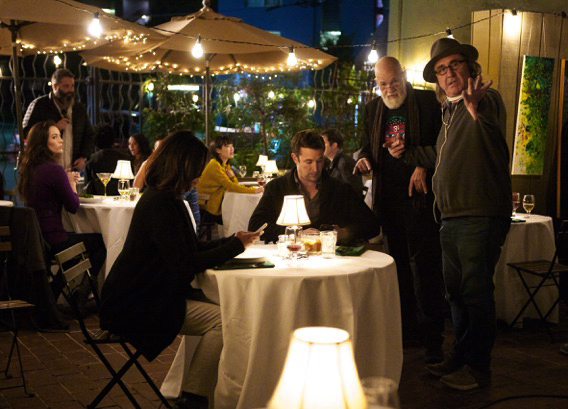
In the first and third portions of the film, did you at all purposefully avoid point-of-view shots in order to create extra emphasis for this visual approach in act two?
Not quite so consciously, but in the first act, we tried to use a more classical, European style — not too stylized or fancy, more natural yet careful and controlled. Before we started shooting, Jeremy and I looked at some French New Wave movies. A lot of them are like “everyday life” in a way, a portrait of everyday life, and not intrusive. In the third act, our reference was Kubrick. We wanted everything to be very precise, and how the actors moved in that frame was very important — maintaining the balance of the compositions. The frame had to be clean, kind of emptied and void. That part of the film is in Noah’s character, the way I understand he’s really pissed off, having pushed down all his anger. Mark now exists in this very empty world, and even his home reflects that. It’s bare and stark, nothing hanging on the walls. The only thing that comes out is his need to connect with the wife again, and the frustration because of his disability — he’s in a wheelchair. About the only thing I did overtly was put the red shades in one room while the bedroom was always dark and bluish. So it was this kind of a place where he would hide, you know. We used a lot of wide angle lenses and very precise camera movement for that portion of the film, and the colors were much more saturated.
This might be a strange question but in the context of this story, I would imagine that red, the color of blood would be something to treat with special care?
It was. And the red accentuated in a very subtle way because it’s seen mostly in that white operating room — white light, white sheets — and that contrast worked well. And since the story is being experienced from those specific points of view, the effect is shocking. It’s very messy, and at one point his blood is all over the floor and the nurses are kind of wiping it up and so there’s this emotional connection to it. That’s Mark’s life spilling out. The red shades we later see in his house were there for us to be reminded of the color of the blood.

What can you tell me about Jeremy Kagan’s directorial approach?
He believes in rehearsal. Jeremy would rehearse for an hour just with actors, then he would bring me in and the operator, and he would rehearse another hour with the two of us watching, and then I would light it. After we would shoot for like three and a half hours, and we were done with the scene before lunch. We shot about four pages a day, each scene had a very long rehearsal. Jeremy is one of those directors who comes to the set extremely prepared. He knows what he needs. He knows exactly for which part of the scene he’s going to use certain shots. So it’s very easy to shoot because he knows exactly how it is going to appear on screen. I think he spent five years working on the movie, spent time at all the locations — we went together several times to possible locations with his iPhone, shooting stills and video, trying to understand how to best use each space.
The classic example of especially smaller, independent films, which is you often have the time but not the money. And so to make the most of your money, you spend the time and it sounds like you really spent the time.
We spent enormous amount of time in conversations and looking at the locations. Jeremy became very attached to certain locations. I sometimes had to drag him out, saying, “Jeremy what you see here is not how it is going to photograph.” You know, it’s dark, it’s green, it’s narrow —It’s not going to look good. I had to help him to translate how a location was going to photograph.
It’s so sad to hear you describe a very logical and reasonable method of using rehearsal time, because, these days, it seems that it is a very misunderstood and disrespected aspect of production.
It is. But it’s during rehearsals that the scene shapes and evolves. You start to see the actors trying to connect, find their places, their motivations, the director, who says, “Okay, we want this to happen maybe a little earlier.” It’s a beautiful process, all coming from what’s written, how the scene is then shaped. Using rehearsal time correctly, the scene is shaped on the set and not covered in multiple ways that can be shaped in the editing room. In my opinion, it becomes more of a director’s vision. It brings certain decisions, and you might be thinking, “I’m taking a risk,” but then you realize that they pay off — you learn to actually you trust your intuition as a filmmaker and realize that you’re professional enough to know when you’re on the right creative path. You learn to know when you set up something and it doesn’t work that no matter how many shots you have, you still won’t be able to “fix it” in the editing room. The other thing I find beautiful in the rehearsal is that you suddenly understand the scene better as a cinematographer, as a filmmaker. You’ll know what you need to cover in wide shot, what you need to cover in a close-up and where you need an insert, because it’s coming out of that rehearsal – if you pay attention to what the actor is doing and what the director is doing, you’ll see the rhythm of the scene and for you as a cinematographer how to emphasize and preserve that scene and the rhythm. Without that understanding, you’re just collecting shots.
It’s so misunderstood in part because there’s this production pressure to just be shooting all the time.
I find that approach very demoralizing to the crew. When they see you very specifically doing your work and saying, “Okay, we’re gonna do this shot and we’re gonna cover this,” they understand you have a point of view and there gives clear meaning behind their work, whether is setting up the dolly or setting the lights. And when you have a crew that takes pride of ownership in your creative process, it’s a real pleasure.
Shot opens in limited theatrical release on September 22.
UPDATE: Since this article was published, Shot has been picked up by Showtime and will begin airing in March.







